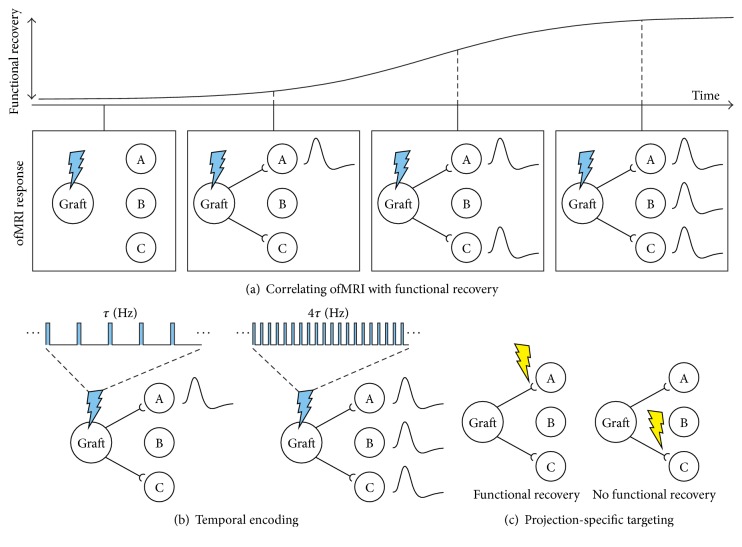Figure 1.
Optogenetic control of neuronal grafts and its combination with fMRI can be used to characterize dynamic graft-host interactions and shed light on neuronal circuit mechanisms underlying functional recovery. (a) The noninvasive nature of ofMRI allows longitudinal studies to be performed in parallel with behavioral assessments of functional recovery. This cartoon illustrates an example in which stimulation of engrafted neurons evokes activity in more downstream regions (represented as nodes A, B, and C) over time. Hemodynamic response functions are shown as insets to indicate the presence of fMRI signal modulations. These functional connections can be matched to behavioral readouts, providing information on which graft-host brain networks underlie functional recovery. In this example, the graft exhibits structural integration and sends projections to two remote regions (nodes A and C). However, the time courses over which these projections influence network activity can differ. Eventually, stimulation can even result in the modulation of a region that does not receive direct projections from the graft itself (node B) but is influenced polysynaptically by the graft-host-host network. (b) Similar to endogenous neuronal populations, engrafted neurons may exert different effects on downstream brain regions depending on the specific temporal pattern of their firing. ofMRI enables precise temporal patterns to be played into the graft while imaging whole-brain activity. This cartoon illustrates an example in which the frequency of stimulation causes the engrafted neurons to modulate the activity of additional downstream regions when stimulation frequency is increased. (c) Projection-specific targeting enables the role of particular graft-host projections to be studied. In this cartoon, for example, functional recovery occurs when the graft-to-A projection in inhibited but does not occur when the graft-to-B projection is inhibited. Experimental paradigms like this can be used to infer which projections are necessary for functional recovery.

